- Home
- Peter Ackroyd
London Page 6
London Read online
Page 6
Documents dated 673–85 are concerned with the trade regulations to be observed by the men of Kent when they barter in Lundenwic. Gold coins stamped “LONDUNIU” were being used in the same period, so that there was no necessary disparity between administrative London and commercial Lundenwic. Similarly a continual process of assimilation and absorption was maintained between erstwhile Britons and Saxon settlers, achieved by intermarriage and peaceful commerce. The evidence for this lies in the most reliable of sources, language itself, since many old British words are to be found in “Saxon” English. Among them are “basket,” “button,” “coat,” “gown,” “wicket” and “wire,” so it can be surmised that skill in textile and wicker-work can best be attributed to the Britons. Another English word testifies to the mixed nature of London: the name Walbrook is derived from Weala broc, “brook of the Welsh,” which suggests that there was still a defined quarter for the “old Britons” in their ancient city.
Bede had said that “Londuniu” was the capital of the East Saxons, but over the period of middle Saxon rule the city seems to have accepted the authority of any king who was dominant within the region—among them kings of Kent, Wessex and Mercia. It might almost be regarded as the commercial reward for any successful leader, together with the fact that the walled city was also the traditional seat of authority. Given this changing pattern of sovereignty, however, it is not perhaps surprising that the main source of continuity lay within the Christian Church. In 601, four years after the arrival of Augustine, Pope Gregory proclaimed London to be the principal bishopric in all Britain; three years later Ethelbert of Kent erected the cathedral church of St. Paul’s. There follows a bare chronicle of ecclesiastical administration. In the year when St. Paul’s was erected Augustine, Archbishop of Britain, consecrated Mellitus as bishop of London; the citizens then formally became Christian but, thirteen years later, Mellitus was expelled after a change of royal rule. The innate paganism of London, for a while, reasserted itself before being eventually restored to the Roman communion.
And then came the Danes. They had plundered Lindisfarne and Jarrow before turning their attention to the south. The Anglo-Saxon Chronicle records that in 842 there was “great slaughter in London,” a battle in which the Vikings were beaten back. Nine years later they returned and, having pillaged Canterbury, sailed up the Thames and with a fleet of 350 ships fell upon London. The city wall along the river may well have been already in ruinous condition but, even if the Saxons had been able to mend it, the defences were not enough to withstand the army of invaders. London was entered and pillaged. Many of the citizens may already have fled; those who remained were put to the sword, if Viking custom was followed, and their huts or shops consigned to the flame. Some historians have considered that the events of 851 marked a decisive moment in London’s history, but this is perhaps to misunderstand the nature of a city which is perpetually rising from flame and ruin. Indeed it has been defined throughout its history by such resurrections.
The invaders returned sixteen years later. Their great army moved through Mercia and East Anglia intent upon capturing Wessex; in 872 they built a camp near London, no doubt to protect their warships along the river, and it seems likely that their purpose was to control London and the Thames basin in order to exact tribute from neighbouring kingdoms. Certainly they occupied the city itself, which was used as a military garrison and storage base. Here they remained for fourteen years. This was not a bare ruined city, therefore, as some have suggested, but once more a busy centre of administration and supply. The Norse commander, Halfdere, minted his own silver coinage which, interestingly enough, is based upon Roman originals. The tradition of literal money-making in London had been preserved since that distant period, testifying once again to the organic continuity of its financial life. Coins were minted in London for Alfred, in his role as client king of Wessex. The native inhabitants may not have been as fortunate as Alfred; from the evidence of coin hoards buried in the first year of Norse occupation, the richer citizens ran for their lives along with every other Englishman who was able to flee.
Then, in 883, Alfred engaged in some form of siege, mustering an English army outside the walls of the city. London was the great prize, and three years later Alfred obtained it. It was, in fact, in the city itself that his sovereignty over the whole region was formally advertised, when “all the English people that were not under subjection to the Danes submitted to him.” London was still the emblem of power, in other words, even after its occupation by the Norsemen. The Danes sued for peace and were allocated territory to the east of the River Lea. London became a frontier town, therefore, and Alfred initiated a scheme of resettlement and fortification. The walls were restored, the quays rebuilt, and all the activities of Lundenwic brought within the defences of the revived city; it is at this point that Lundenwic passes into history as Aldwych, or “old market-town.”
London had once more become new, since Alfred instituted a scheme of works which might qualify as an early attempt at city planning. He built a road, just within the walls, from Aldgate to Ludgate; the outline of it still exists in the streets of the modern City. The alignments of new streets were plotted close to the wharves of Queenhithe and Billingsgate. He re-established London and rendered it habitable.
Certainly the city was powerful and formidable enough to withstand Viking assaults in succeeding years; the burgwara, or citizens, even marched out against them in 893 and 895. On that later occasion Londoners sallied forth to destroy or plunder the enemy ships. The fact that the Vikings were unable to retaliate against London suggests the effectiveness of its defences.
The restoration of London’s life and power might not have been all of Alfred’s doing, although his native genius as a planner of cities suggests that he played a prominent role. He had given lordship of London to his son-in-law, Ethelred, and had granted lands within the walls to religious and secular magnates. There then grew up that curious division or subdivision of land which is manifest today in the various wards and parishes of the City. An area of London ground might have been defined by streams, or by the course of Roman remains, but once apportioned to an English lord or bishop it became his especial soke or territory. Churches, of wood or of limestone and sandstone, were erected to bless and protect each well-defined area of London’s earth; these sacred edifices in turn became the focal point for small communities of tradesmen, artificers and others.
The early tenth century was a period of peace, although the citizen army of London assisted Alfred in his efforts to free those British regions still held under the Danelaw. The historical records describe only the succession of Mercian kings to the overlordship of London. In 961 there was a great fire, succeeded by an outbreak of plague fever; the cathedral church of St. Paul’s was destroyed in the conflagration, and once more we witness the periodic fate and fatality of the city. There was another great fire twenty-one years later, and in the same year three Viking ships attacked the coast of Dorset. The succeeding years were marked by a series of Viking attacks upon the prosperous city; no doubt the London Mint, with its reserves of silver, was a particular attraction. But the defences, restored by Alfred, were strong enough to withstand a number of incursions; in 994 the Danes sent a force of ninety-five ships into the Thames in order to blockade and assault the city, but they were driven back by London’s army. According to the Anglo-Saxon Chronicle these citizens visited upon the Danes “more slaughter and harm than they ever supposed that townsmen could inflict.” It is important to recognise, in the course of these battles and sieges, that London itself had acquired its own army and therefore a measure of independent power; it possessed the characteristics of a kingdom or a sovereign state which, for many centuries, it never wholly lost.
So the soldiers of London continually resisted the Danes, and there are records of them seizing the alien ships and rowing them back to the city. They marched to Oxford to assist their countrymen and, although the Viking raids occasionally swept within the
vicinity of their walls, the city stood firm. Indeed London still maintained its position as a flourishing port, and in 1001 an Icelandic poet recorded his impressions of the quayside where merchants from Rouen, Flanders, Normandy, Liège and other regions paid a fixed toll upon their goods; they brought in wool, and cloth, and planks, and fish, and melted fat; a small ship paid a toll of one halfpenny, and in turn the mariners bought pigs and sheep for their journey homewards.
In 1013 the Danish leader, Sweyn, commanded a full invasion force of Scandinavian warriors and marched upon London “because therein was King Aethelred.” The “citizens would not yield,” according to the Anglo-Saxon Chronicle, “but resisted with full battle.” It was not enough, however, and after a long siege they surrendered their city to the Danes. The reigning monarch fled but in the following year he returned with a most unlikely ally, Olaf of Norway. Olaf’s Norsemen manoeuvred their ships close to London Bridge, tied them to its wooden piles with ropes and cables, then, assisted by the tide, strained at the wooden supports until they were dislodged and the bridge itself fell into the Thames: a notorious episode in the history of that great thoroughfare. In recent years iron axes and swords have been found at this point in the river. An Icelandic saga suggests that “the citizens, seeing their river occupied by the enemy’s navy so as to cut off all intercourse that way with the interior provinces, were seized with fear.” Since they were being relieved of a temporary and alien king this is perhaps open to debate, but the loss of the bridge was indeed a serious impediment to commerce and communications. Yet the saga ends happily, or at least with an encomium—“And thou hast overthrown their bridges, oh! thou storm of the sons of Odin! skilful and foremost in the battle. For thee it was happily reserved to possess the land of London’s winding city.” Olaf himself was eventually beatified, and in London were erected six churches to venerate his memory, one by the southeastern corner of the bridge which he had once destroyed. St. Olave in Hart Street, where Samuel Pepys worshipped, still stands.
During the next three years the English and the Norse were engaged in a series of sieges and battles and assaults; in this protracted warfare London remained the single most important site of power and authority. After the death of Aethelred in 1016, “all the councillors who were in London and the citizens chose Edmund as king,” again according to the Anglo-Saxon Chronicle, which suggests that there was some kind of folkmoot where the king was chosen and saluted. When Cnut eventually won the crown in 1016 he extracted tribute from the whole nation, but London was obliged to render one-eighth of the entire amount.
Meanwhile, a Danish population, trading peacefully, settled outside the walls in the area once occupied by the Saxons. The church of St. Clement Danes, at the mouth of the Strand, marks the site of their occupation; it is even possible that a tribal community of Danes had lived and worked here for several generations, but it was in the time of Cnut that the wooden church was turned to stone. It is also believed to be the burial place of Harold Harefoot, the son of Cnut, and there is a runic monument which proclaims the fact that three Danish leaders also “lie in Luntunum.” So once more we have evidence of a flourishing market-centre dependent upon the walled city. William of Malmesbury suggests that “the citizens of London,” after long familiarity with the Danes, “had almost entirely adopted their customs”; this suggests a renewed history of assimilation.
One custom was thoroughly absorbed. There was once a stone cross close by the church of St. Clement Danes, which marked a place of power and ritual. Here an open court assembled, and it was “at the Stone Cross” that manorial dues were paid; for one piece of land in the vicinity, payment was given in horseshoes and iron nails. It is sometimes believed that this is an obscure remembrance of a pagan rite, but it has also become a modern one. In the early twenty-first century there is still a ritual of presenting six horseshoes and sixty-one hobnails in the Court of Exchequer, within the Law Courts close to the site of the old cross itself, as part of rent due to the Crown.
So the Danes, and the Londoners, flourished during a period in which the historical narratives record only the actions of “the citizens of London” or “the army of London” as an independent and effectively self-governing community. When the pale-skinned and devout Edward (afterwards “the Confessor”) was anointed, the Anglo-Saxon Chronicle records that “all men chose him for king in London.” A legal statute in fact defined London “qui caput est regni et legum, semper curia domini regis” as the source of law and royal rule.
CHAPTER 3
Holy! Holy! Holy!
Edward the Confessor left a memorial more enduring than his family’s fortunes; he retired to a palace, and established a monastery, in Westminster.
There had been a church there since the second century, but London antiquarians have suggested that there was once a pagan shrine to Apollo on the same site. Certainly a Roman sarcophagus, and a section of floor mosaic, have been found in the immediate vicinity. It was an area of great importance, in any case, since Westminster—or more particularly Thorney Island upon which Parliament and the abbey now rest—marked the spot where the road from Dover was united with Watling Street which proceeded northward. At low tide it was possible to cross the river here, and to ride along the great Roman ways. Yet topography is not simply a matter of road alignments. Tothill Fields beside Westminster was part of a ritualised area of power and worship; a document of 785 describes it as “that terrible place which is known as Westminster,” “terrible,” in this context, meaning sacred or holy terror.
It is not inappropriate, therefore, that the founding of Westminster Abbey is enwrapped in dreams and visions. The night before the hallowing of the first Saxon church here, in the seventh century, St. Peter himself appeared to a fisherman and was ferried across the river from Lambeth; the venerable figure crossed the threshold of the new church and all at once it was illuminated by a light brighter than a thousand candles. So began the history of the church of St. Peter. Edward the Confessor was in turn granted a dream, or vision, which persuaded him to build a great abbey. It became the repository of sand from Mount Sinai and earth from Calvary, a beam from the holy manger of Jesus and pieces of his cross, blood from Christ’s side and milk from the Virgin Mary, a finger from St. Paul and hair from St. Peter. Almost a thousand years later, in this place, William Blake was granted a vision of monks chanting and proceeding down the central aisle. A century before the poet’s sighting, Edward the Confessor also reappeared: a chorister came upon the broken coffin of the venerable king and drew from it a skull. So the sainted king had turned into a death’s head. It is perhaps an appropriate story for an abbey which has become London’s city of the dead, where the generations of kings and leaders and poets lie in silent communion as a token of that great mystery where past and present are mingled together. It is the mystery, and history, of London.
West Smithfield, after the foundation of St. Bartholomew-the-Great in the early twelfth century, witnessed as many miracles as any similar plot in Rome or Jerusalem. Edward the Confessor, in a prophetic dream, was informed that Smithfield had already been chosen by God as a place for his worship; Edward journeyed there the next morning and foretold that the ground should be a witness to God. In the same period three men from Greece came on pilgrimage to London, for already it had the renown of a sacred city; they approached Smithfield and, falling prostrate upon the ground, prophesied that there would be constructed a temple which “shall reach from the rising of the sun to the going down thereof.”
“The Book of the Foundation” of that great church of St. Bartholomew, from which these words are taken, was written in the twelfth century; it has much material for contemplation, but it also contains evidence relating to the piety of London and of Londoners. The founder of the church, Rahere, was on a journey in Italy when in a dream he was taken up by a beast with four feet and two wings to a “high place” where St. Bartholomew appeared to him and addressed him: “I, by the will and command of all the High Trinity, and w
ith the common favour and counsel of the court of heaven, have chosen a spot in the suburb of London at Smithfield.” Rahere was to erect there a tabernacle of the Lamb. So he journeyed to the city where, in conversation with “some barons of London,” it was explained that “the place divinely shown to him was contained within the king’s market, on which it was lawful neither for the princes themselves nor for the wardens of their own authority to encroach to any extent whatever.” So Rahere sought an audience of Henry I in order to explain his divine mission to the city; the king graciously gave Rahere title to the spot which was at that time “a very small cemetery.”
Rahere then “made himself a fool” in order to recruit assistants in the great work of building. He “won to himself bands of children and servants, and by their help he easily began to collect together stones.” These stones came from many parts of London, and in that sense the narrative of construction is a true representation of the fact that St. Bartholomew’s was a collective work and vision of the city; it became, in literal form, its microcosm.
So the church rose, and many priests gathered to live “under regular rule” with the founder as prior. Beginning with its first foundation, when “a light sent from heaven gleamed over the church and remained over it for the space of an hour,” there were so many miraculous events within its walls that the chronicler declares that he will mention only those which he himself has witnessed. Wolmer, a cripple who supported himself “on two little stools he dragged behind him,” was carried to St. Bartholomew’s in a basket and, falling before the altar, was healed. A “certain woman of the parish of St. John” had her “enfeebled” limbs cured, and Wymonde that was dumb began to speak. Many of these miracles occurred on the day of the Feast of St. Bartholomew, so there was a continual awareness of sacred time in the city as well as sacred place. Miraculous cures were also performed in the “hospital of the church,” now St. Bartholomew’s Hospital. So St. Bartholomew’s is a temple of the holy spirit which has endured for almost nine hundred years.

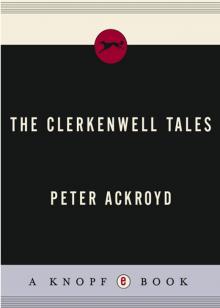 The Clerkenwell Tales
The Clerkenwell Tales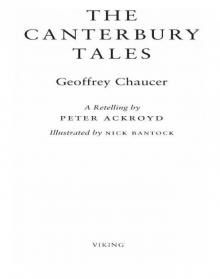 The Canterbury Tales
The Canterbury Tales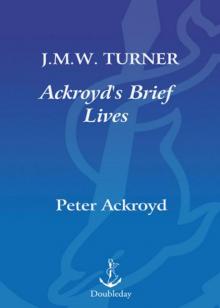 J. M. W. Turner
J. M. W. Turner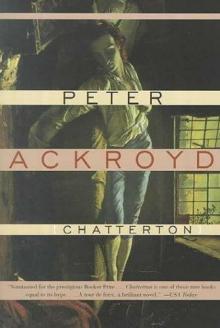 Chatterton
Chatterton The Canterbury Tales – A Retelling
The Canterbury Tales – A Retelling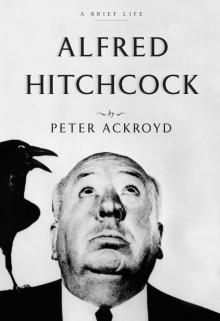 Alfred Hitchcock
Alfred Hitchcock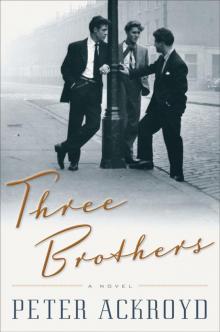 Three Brothers
Three Brothers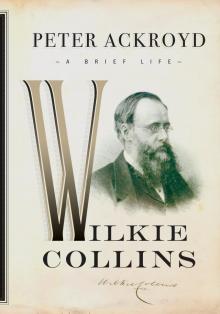 Wilkie Collins
Wilkie Collins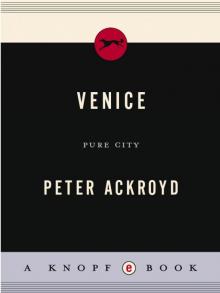 Venice
Venice Poe
Poe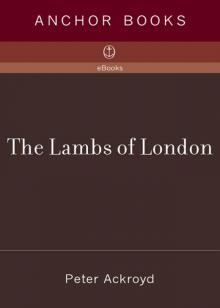 The Lambs of London
The Lambs of London London
London Queer City
Queer City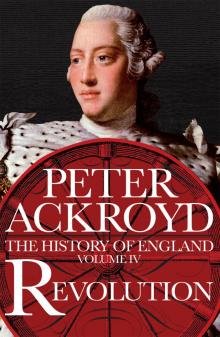 Revolution, a History of England, Volume 4
Revolution, a History of England, Volume 4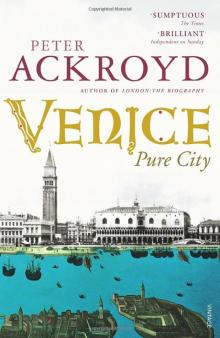 Venice: Pure City
Venice: Pure City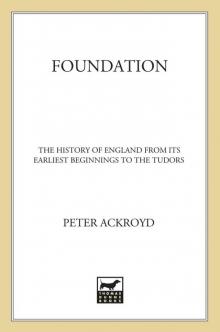 Foundation
Foundation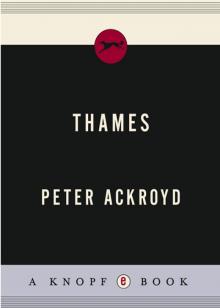 Thames
Thames The Plato Papers
The Plato Papers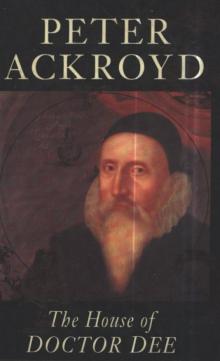 The house of Doctor Dee
The house of Doctor Dee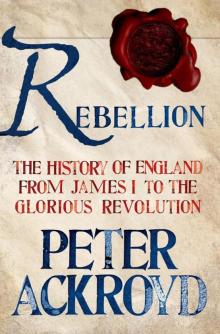 Rebellion: The History of England from James I to the Glorious Revolution
Rebellion: The History of England from James I to the Glorious Revolution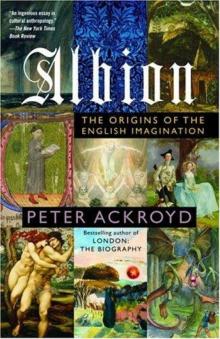 Albion: The Origins of the English Imagination
Albion: The Origins of the English Imagination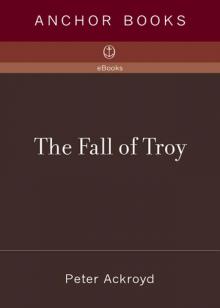 The Fall of Troy
The Fall of Troy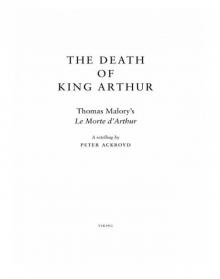 The Death of King Arthur
The Death of King Arthur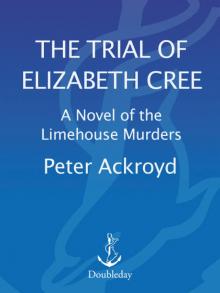 The Trial of Elizabeth Cree
The Trial of Elizabeth Cree London: The Biography
London: The Biography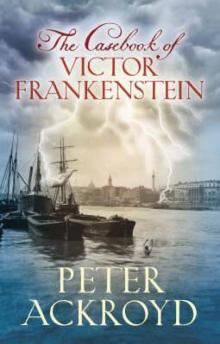 The Casebook of Victor Frankenstein
The Casebook of Victor Frankenstein Hawksmoor
Hawksmoor Charlie Chaplin
Charlie Chaplin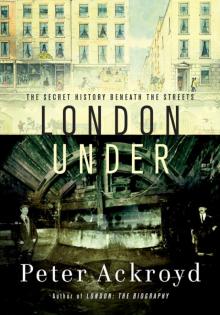 London Under
London Under